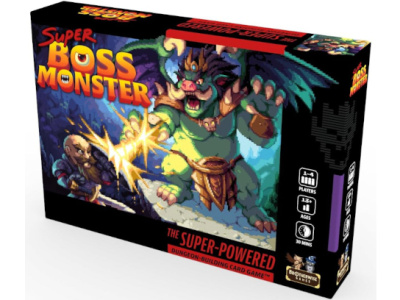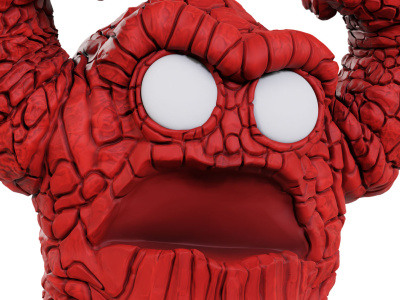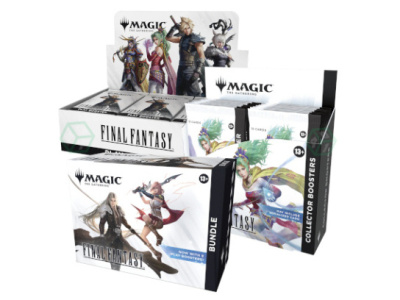 Matt Forbeck (@mforbeck) is an award-winning game editor and designer, writer and author of several books, including most recently his Gen Con murder mystery novel: Dangerous Games: How to Play. We reprint here, with permission, his thoughts on our chart of the Top Ten Tabletop Game Kickstarters, in which he looks at what the top dollar projects have in common.
Matt Forbeck (@mforbeck) is an award-winning game editor and designer, writer and author of several books, including most recently his Gen Con murder mystery novel: Dangerous Games: How to Play. We reprint here, with permission, his thoughts on our chart of the Top Ten Tabletop Game Kickstarters, in which he looks at what the top dollar projects have in common.Over at ICv2, they’ve posted a list of the top ten tabletop gaming Kickstarters of all time (um, four years now, in Kickstarter terms). They don’t offer up much in the way of analysis there, though, other than to say "tabletop game projects are among Kickstarter’s most successful categories, with five projects at over $1 million, and three over $2 million."
All true, but why is that? Why are tabletop games outdoing even video games, which are far more popular in general?
It has to do with the economies of scale of plastic miniatures.
(If that sentence put you to sleep, move on. Now. I’m going deep here.)
Every one of those games on ICv2′s list is a game or product that features lots and lots of plastic figures or terrain. Most of them started out with a decent amount of plastic in their boxes, but as each Kickstarter grew, the producers tossed in more and more plastic bits until the drives went from "cool stuff" to "awesome bargain on cool stuff!"
The Reaper drive for their Bones figures line is a perfect example of this--and was also the top-grossing drive, raking in more than $3.4 million. Their most popular reward came if you backed them at their $100 Vampire level. At the start of the drive, that got you a total of 67 figures. By the end, you racked up 240 figures, plus a number of other neat things, like a copy of my Hard Times in Dragon City novel, which unlocked at the $3 million mark.
So how did Reaper manage to nearly quadruple the number of figures they offered while keeping the price the same? The secret’s in the plastic.
Casting metal miniatures is a labor-intensive process that involves pouring molten metal into a spin-casting machine that distributes the metal into hollow cavities cut into a vulcanized rubber mold. The molds wear out after a while, and you have to make new ones. The metal’s a little pricey, but the rubber’s cheap, so it’s a great way to make miniatures if you’re making a few thousand or less.
However, if you can sell more than that many miniatures, you should make your figures in plastic instead, as the molds for these last virtually forever and the figures only cost pennies apiece. The trouble is that the injection molds for plastic figures are cut from steel, a process that costs thousands of dollars per figure rather than dozens. A small company can’t afford to make hundreds of these molds at once, at least not without a huge cash influx.
And that’s where Kickstarter comes in. If you can get your backers to pledge enough money to cover your steel molds, then you can give them lots of figures for their money. Better yet, if you bust through your initial funding goals, you can set stretch goals for new figures and toss them into the mix for either little cost (as low-cost add-on options) or bundle them in for free.
When the Reaper drive started, the per-figure price of their Vampire level was $1.49 each, shipped to your door. That’s a phenomenal bargain when you consider that most metal fantasy gaming figures cost around $5 each - or much more if you’re into a game like Warhammer. By the time the drive was over, the per-figure price fell to under 42¢ each.
Every time Reaper’s backers broke another stretch goal, the bargain got better and better for them. That gave them lots of incentive to tell their friends about the deal and rope them into joining the drive, and the effect snowballed with each stretch goal knocked down. By the time the drive ended, it was such a fantastic deal for anyone who’d ever pushed figures around a table that it became nearly irresistible.
All of the other miniatures-based triumphs follow this same kind of model. The recent Dwarven Forge Game Tiles drive, for instance, (on which I did a little consulting) followed this to the letter, and it brought in over $1.9 million.
Most other types of Kickstarter ventures cannot pull this sort of thing off. If you’re Kickstarting a novel, for instance, it’s hard to offer lots more novels in a time frame that makes sense for most readers. Evil Hat managed something close to this by bringing in lots of authors for its Spirit of the Century novel line Kickstarter, and the strategy made that the #5 fiction drive ever. (By my count, it’s actually the #1 straight novel drive, but that’s a separate post.)
The nature of minis, though, means you want to have as many of them to play with at once as you can manage, and with enough money a producer can manage this in a reasonable amount of time. It makes it a natural niche for a top Kickstarter--if it’s run well. It’s not something just any company can pull off though. There’s a lot of hard-won knowledge, skill, and expertise that goes into running and producing a successful line of plastic figures, and Kickstarter makes for the perfect way for the people who have that particular combination of things to capitalize on it.
The opinions expressed in this column are solely those of the writer, and do not necessarily reflect the views of the editorial staff of ICv2.com.







